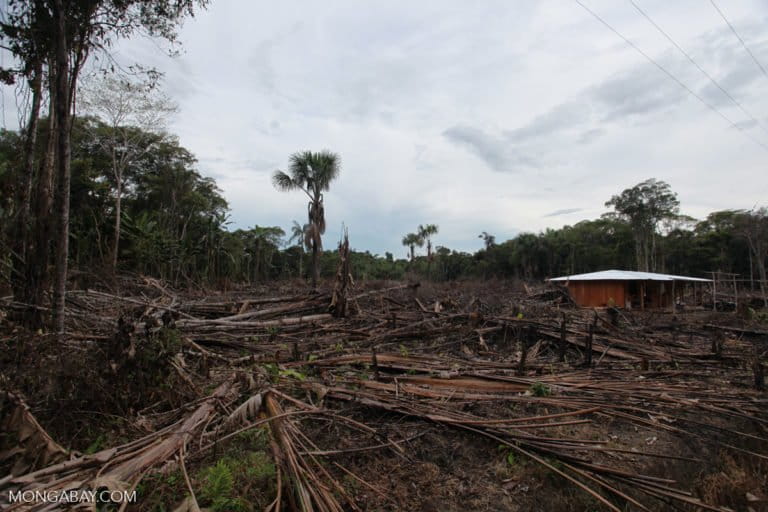- A team of scientists from the University of Washington, the University of Arizona, Michigan State University and the Universidad de Antioquia in Colombia modeled climate simulations comparing what would happen as the result of die-offs and deforestation in the Amazon and western North America to other forests.
- In isolation, a forest die-off in North America would lead to slower growth in northern Asia’s forests and a drier climate in the southeastern United States. However, the loss of forests in both North America and the Amazon could make the American Southeast’s forests more productive.
- The authors say that the ‘teleconnections’ between forests separated by huge distances revealed by their research indicates a need for globally coordinated forest management.
When a forest falls prey to disease, pests, drought or clearing by humans, the impacts ripple well beyond that local ecosystem, according to a new study.
Much like the well-known phenomenon of El Niño, it turns out that removing forest on one part of the globe touches off changes in other areas.
“El Nino is a sloshing around of hot water in the tropical Pacific, but we know that it has these climate impacts that can reach across the globe,” said Abigail Swann, an ecoclimatologist at the University of Washington in Seattle.
For example, “In parts of the US, we see noticeably warmer or drier or rainier conditions,” despite being far away, Swann said.

Now, for the first time, Swann and her colleagues have documented what are known as “teleconnections” resulting from changes to the surface of the Earth. They published their findings online in the journal PLOS ONE on November 16.
Scientists know that forests hold sway over how energy moves through the atmosphere. Their disappearance at northern latitudes can increase how much sunlight is reflected back into the atmosphere, causing a cooling effect. Conversely, deforestation in the tropics tends to heat things up in the immediate surroundings and messes with rainfall patterns in other parts of the world.
Swann said that she and her colleagues suspected that the atmosphere might also transmit the impacts of removing forests to vegetation in other locations.
To better understand what is happening, they ran a series of climate model simulations to compare the wide-ranging effects of losing forest in these “hotspots.” They looked at the huge areas of tropical rainforest that we humans are clearing in the Amazon, and at diminishing forests running from the American Southwest to Alaska whittled away by a changing cocktail of heat, pests and moisture.
In the simulations, taking only forests from western North America out of the equation chilled parts of northern Asia, making the soil less hospitable and tempering forest growth. That single change also led to atmospheric changes that ultimately made the southeastern U.S. drier – not a good sign for forests there, either.

But when they ran a simulation combining deforestation in the Amazon and forest die-offs in the West, the resulting pattern shifted: Trees in the southeastern U.S. actually ended up doing better.
What is important to note, Swann said, is not this specific pattern, which could shift as the interactions with other forests are added to the mix. It’s that “these kinds of changes in forest cover are large enough to initiate these types of patterns,” she said.
The next step is to plot out these teleconnections and tease apart the relationships between specific stands of forests and the atmosphere, Swann said. A more sophisticated understanding of these interactions could allow scientists to predict the far-reaching repercussions of forest removal that will be felt on other parts of the planet.
And ultimately, this research points to a need for a broader approach to how we use and conserve forested areas around the world, Swann said.
“Because the climate response is a little bit different when we have the loss of forest in both North America and South America, it suggests that if you want to manage forests, we really need to do that in a more globally coordinated way.”
Citations:
- Garcia, E. S., Swann, A. L. S., Villegas, J. C., Breshears, D. D., Law, D. J., Saleska, S. R., & Stark, S. C. (2016). Synergistic Ecoclimate Teleconnections from Forest Loss in Different Regions Structure Global Ecological Responses. PLOS ONE.
Banner image of deforestation in the Amazon by Rhett A. Butler














